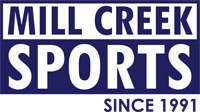The Evolution of Ichiro’s Autograph
Posted by Jody Bossert on 20th May 2025
Confession. Growing up I would take pride in practicing my signature, knowing that one day it would adorn baseballs, album covers, or what have you. Somewhere along the line, the wonders of the multiverse kicked in and I now find myself in a timeline where my signature isn't in demand quite as much as I feel it really should be (I know, it’s the weirdest thing). It's still the same signature I've had since junior high though and it got me thinking. For those who didn't fine-tune their signature prior to stardom, how has their signature evolved on the fly?
To study this, I needed to look no further than a player Mill Creek Sports is honored to have an exclusive signing relationship with, former Seattle Mariner (and Blue Wave and Marlin and Yankee) and 2025 Hall of Famer, Ichiro Suzuki.
“Wait, did he just say, ‘Blue Wave?’”
Yes. Ichiro’s stardom and first celebrity autographs didn’t begin in Major League Baseball. His fame emerged during his 9-year career with the Orix Blue Wave of the Japan Pacific League so let’s dive into his autograph at that point.
Early Career (NPB: Orix Blue Wave - 1992-2000):
During his playing days in Japan, Ichiro mostly signed his name in Kanji (Japanese characters). These early signatures are considered quite desirable by collectors, especially in the broader memorabilia market outside of Japan where they are less common.
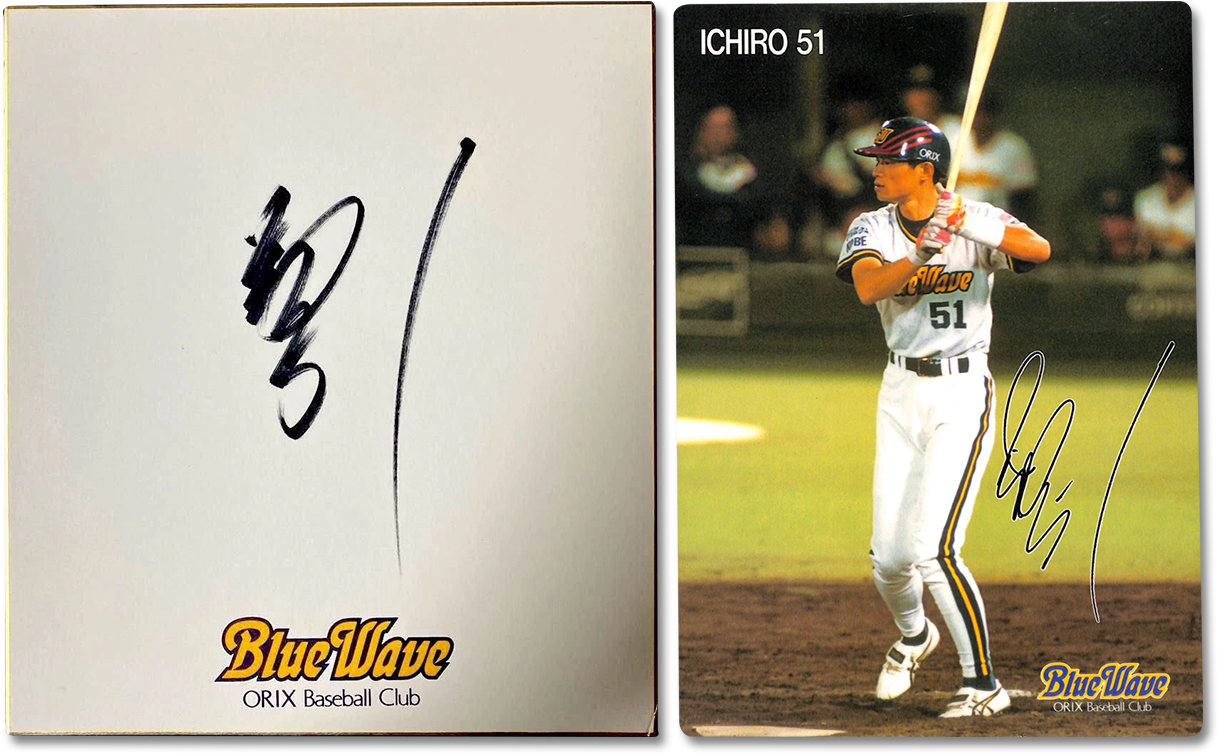
Though he first played professionally in ‘92, he spent most of his first two years in the farm system as Manager Shōzō Doi wasn’t sold on the mechanics of his swing.
In 1993 we can see one of the first examples of his signature with Roman characters in this card from Pacific Sports Promotions while playing for the Hilo Stars in the short-lived Hawaiian Winter Baseball League.
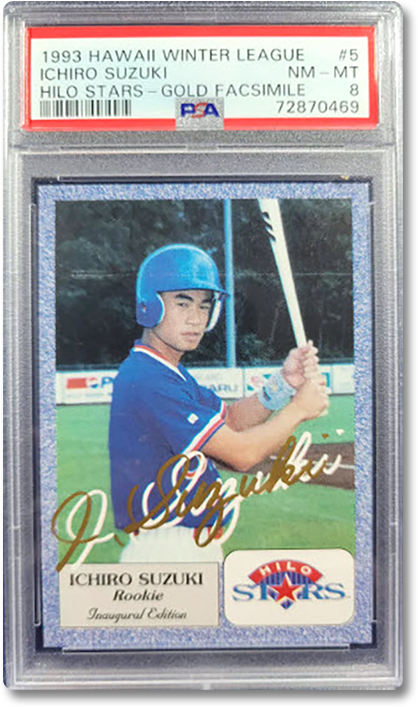
1994 saw a new Blue Wave manager in Akira Ōgi who added Ichiro to the lineup as an everyday player. He would prove more than worthy, recording a .385 average (a Pacific League record) and a Japanese single-season hits record of 210. His 13 home runs and 29 stolen bases that year also helped earn him the first of three consecutive Pacific League MVP awards.
Ichiro Suzuki, as he was known at the time, experienced a great rise in his popularity that year. Suzuki is the second-most common family name in Japan and his hitting mentor Hiromasa Arai recommended going by his given name of Ichiro. His manager was receptive and encouraged the change as a publicity move. Ichiro was initially embarrassed by the change, but warmed to it as he became a household name and endorsement offers rolled in.
With that name change one can surmise that prior to the 1994 season Ichiro’s autograph in kanji would have been 鈴木 一朗, which is a combination of the characters 鈴木 (Suzuki) and 一朗 (Ichirō). I have been unable to find any such autographs with both names however, which speaks to their value should one emerge.
Early MLB Career (MLB: Seattle Mariners - 2001-2012):
Upon his arrival in MLB, his signature transitioned primarily to roman letters to cater to the North American fan base. In these early days, whether in Kanji or Roman letters, Ichiro’s signature was slightly more legible than later in his career as it featured more distinct individual characters.
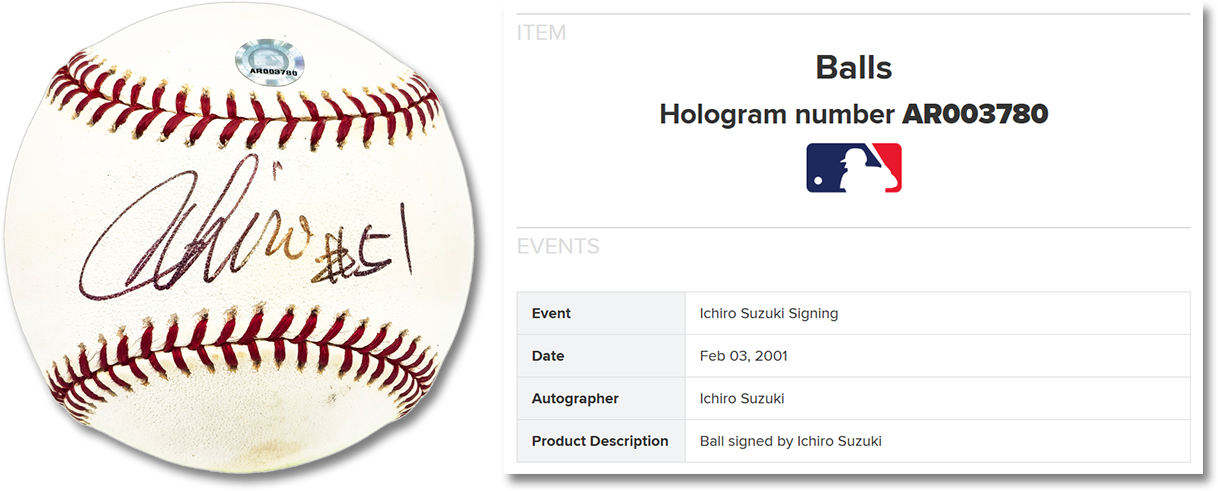
See if this ball is still available at Mill Creek Sports.
We see an example on this 1998 BBM Japan card. I was able to cleanly make out each letter in his signature - at least I think I was. I mean, the i isn’t dotted, but there’s probably a dot there hidden on the dark background. It is worth noting the absence of the S at the end. Plus, the ginormous 1 could be a habit from his kanji autographs which feature a similar big, vertical line at the end.
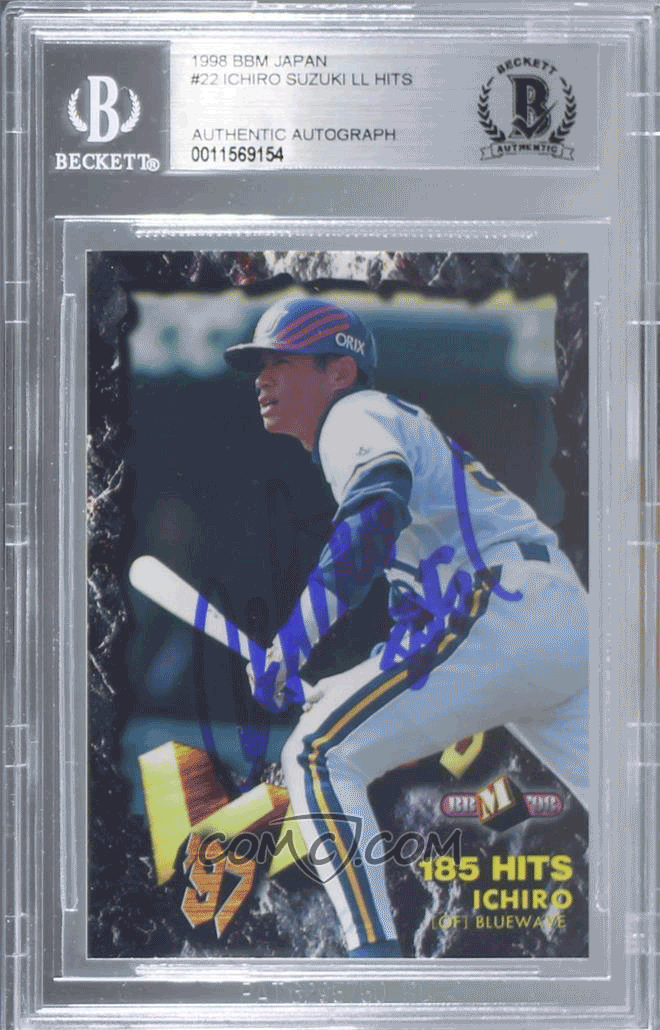
Unfortunately the authentication date is August 16, 2019 so that doesn’t help confirm if it’s a signature from early in his career, but a query to our knowledgeable staff who have worked exclusively with Ichiro since he became a Mariner in 2001 confirmed that it does appear to be from around 1998.
More signatures from his early days can be found on his 2001 Ultimate Collection Autograph #120 cards. These cards serial-numbered to 250 are the only time his autograph appeared on-card as a rookie, making them his most valuable rookie cards. These cards feature a rising signature with slightly less legible letters.
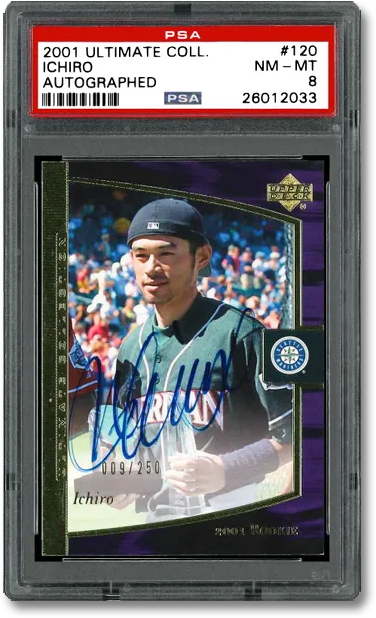
That part above where I mentioned that the Ultimate Collection was his only rookie card with an on-card auto? Yeah, I was stretching the truth a bit. There’s also this 2001 SPx #150 autographed jersey card, but the autograph isn’t technically on the card. Or is it? Are the jersey and the card one in the same? (This concept hurts my brain. Moving on.)
Though a dotted i wasn’t obvious in the previous two autos from the same period, it’s definitely visible here. We also see the start of what many believe to be an S at the end for Suzuki. The S appears to be capitalized as it’s larger than the other letters. It’s in the previous Ultimate Collection card too, just not as visible (it swoops up over his shoulder).
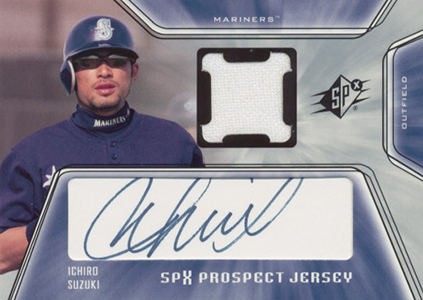
Here’s his signature, very similar, on a 2001 SP Authentic Chirography Silver Update card. Wait... Hey, it’s another RC on-card auto. Okay, why did I read on PSA’s site that he only had one RC on-card auto? I’m obviously missing something. Appreciate that they mentioned us in their article though.
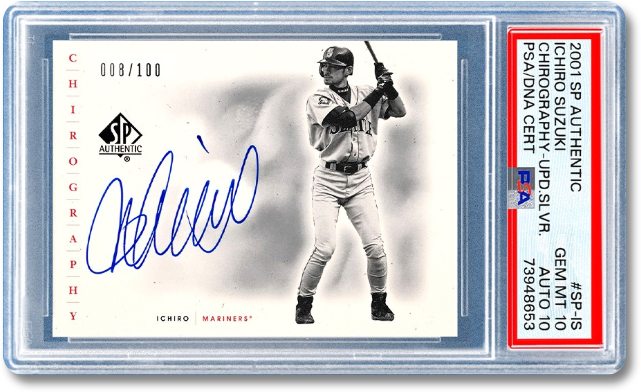
A couple years later we see his signature on these 2003 Upper Deck SP Authentic cards. We still see somewhat legible characters, though the h has become a bit of a scribble. The capital I has become more of a vertical line versus a rounded swoop and a dot on the second i remains. A slight rise continues, ending with the Suzuki S.
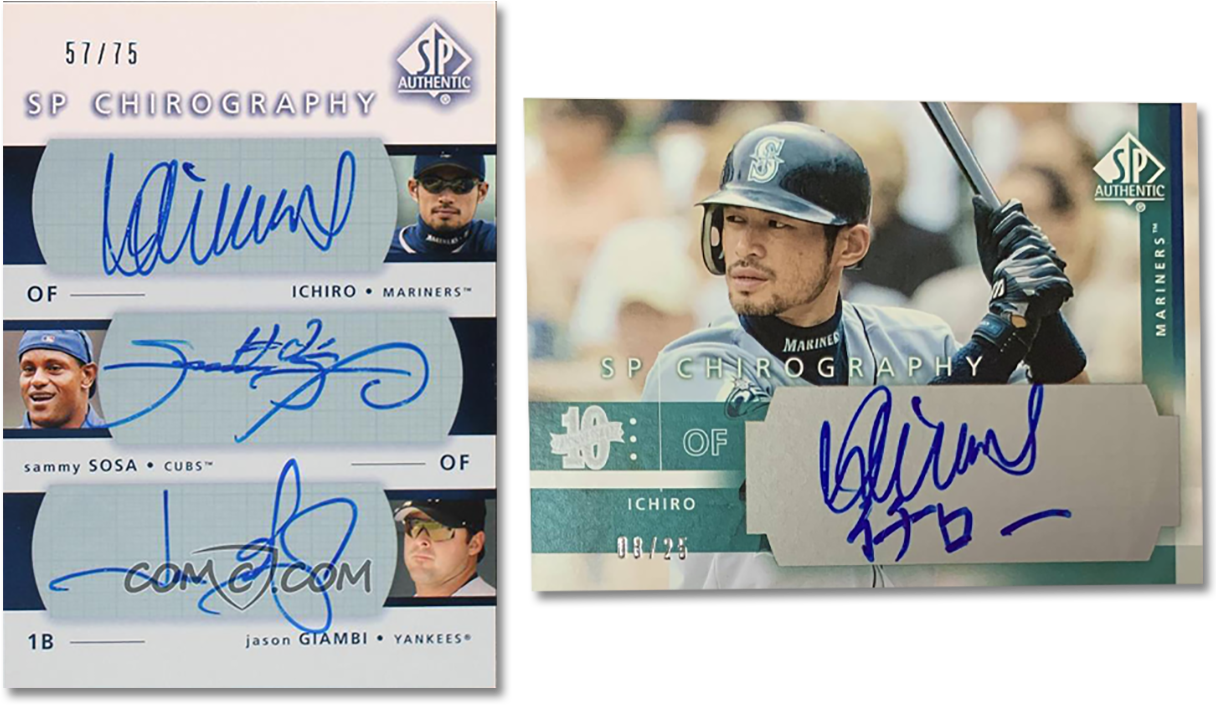
Jumping ahead a bit, we can see here on these 2011 Leaf Metal Draft cards the iconic, fairly illegible signature that has become more of a logo for an epic international brand than a simple autograph. It starts with a big, looping capital I that seems to continue getting bigger in later autographs as well. Plus, the S starts looping more and more from here on out as well, setting it apart as the initial for its own word a bit.
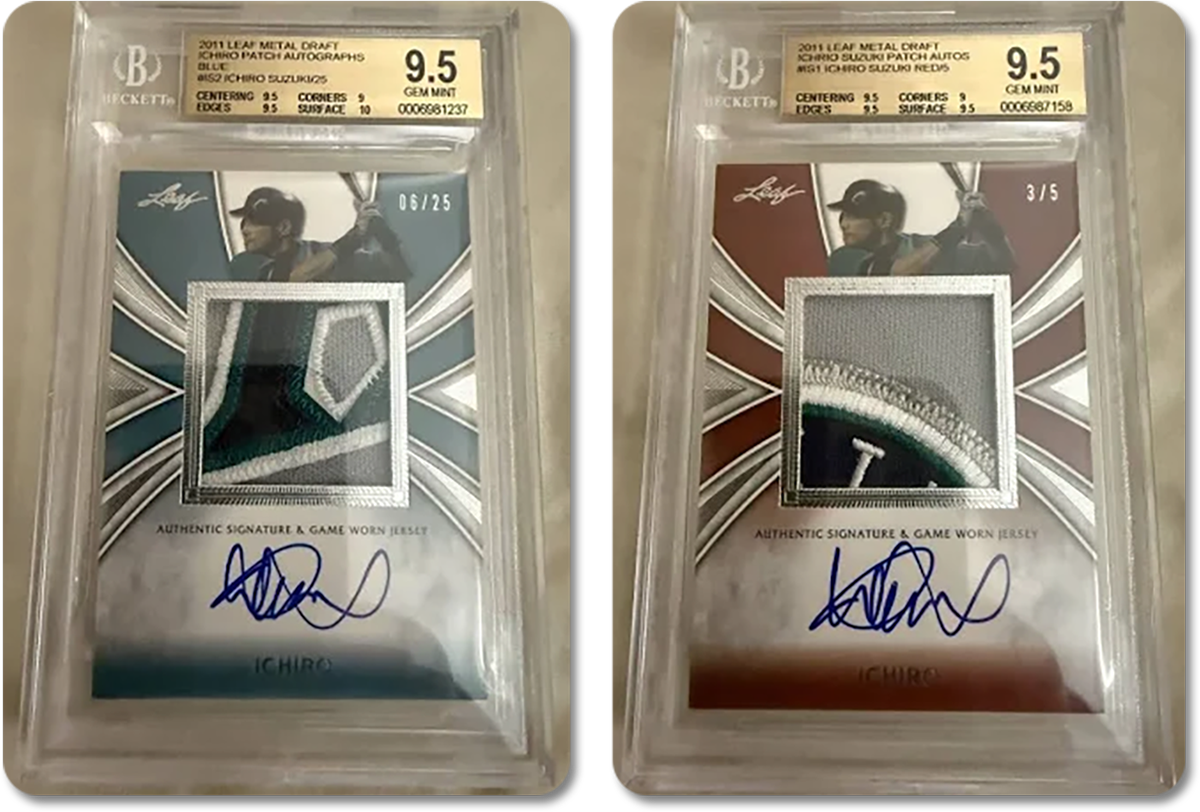
Later MLB Career (MLB: Yankees, Marlins, Mariners - 2012-2019):
Having signed autographs for 20 years at this point, Ichiro’s signature had come into its own by now and truly represented his brand. It’s unique, smooth, flowing design perfectly mirroring his style of play on the field. Here we see it on an autographed 8x10 reprint in 2016 compared to the original 2001 Bowman Chrome card.
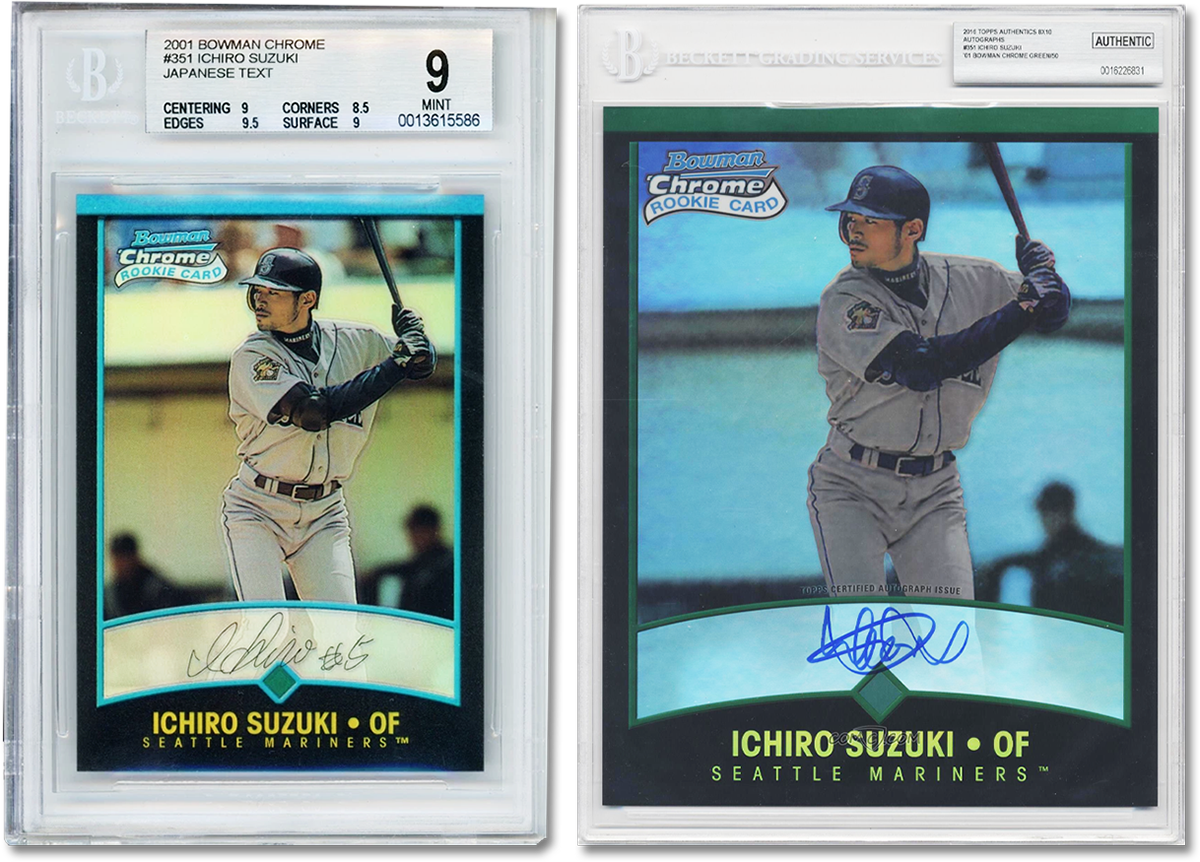
You’ll notice above that the 2001 autograph is missing the 1 in his number 51. According to Mill Creek Sports Operations Director Brent Holcomb, “That card is actually a facsimile autograph that Bowman distributed. People often want to consider it an ‘error card’ since it’s missing the 1, however Bowman never distributed a fix so there’s no additional value there for the rarity. Ichiro actually likes to sign over it.”
So, you want a better comparison than side by side? How about signing right over the top?!

Pretty cool. I’m a bit surprised he doesn’t fix the number 51 though.
Post-Playing Career/Hall of Fame:
2020 delivered this Topps Luminaries Relic autograph and in 2024 we saw this Topps Chrome Black autograph. Both have a fairly consistent look showing a continued evolution of his signature even since 2016. This is most evident in the S that looks more like a big, rounded M. We see this on the previous card too which tells us that it was a fairly recent signature (well, since the 8x10 reprint from 2016 shown above at least).
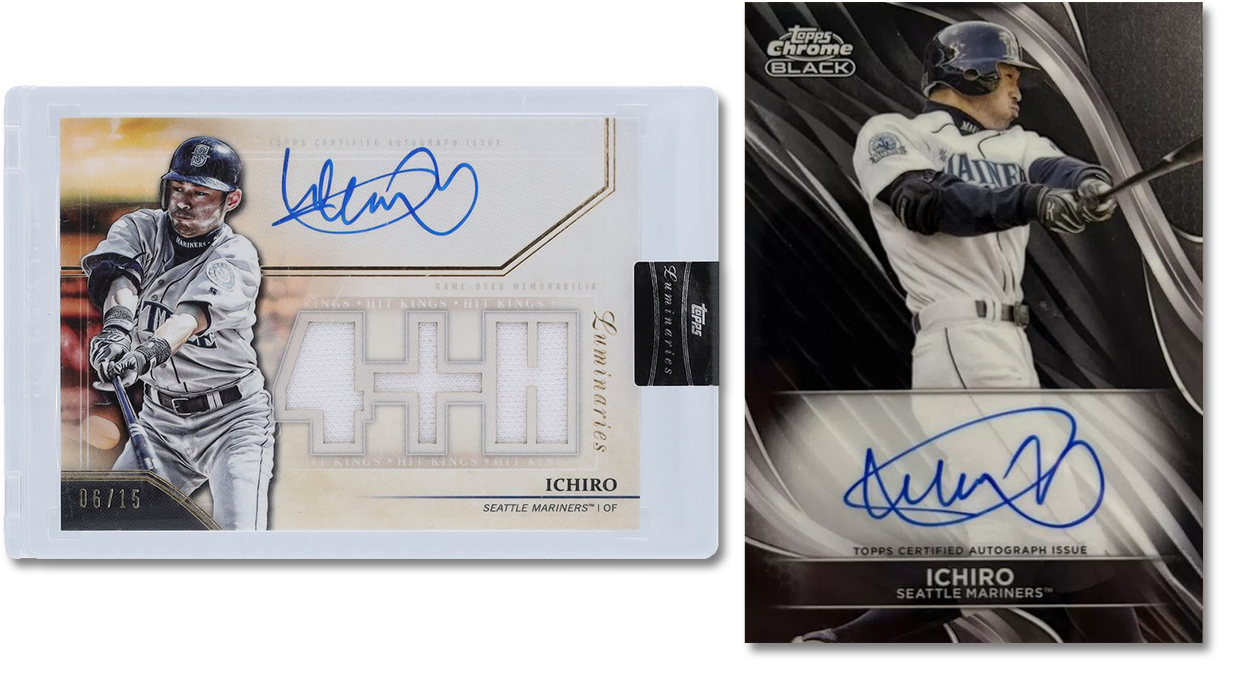
This brings us to today where we can see recent samples of his signature witnessed right here in-house. With the announcement of Ichiro’s Hall of Fame induction three months ago on January 21, 2025, he has visited on multiple occasions to help us keep up with demand for his signed memorabilia.
That said, he has always been mindful to keep up with demand without saturating the market so his autographed items remain quite valuable.
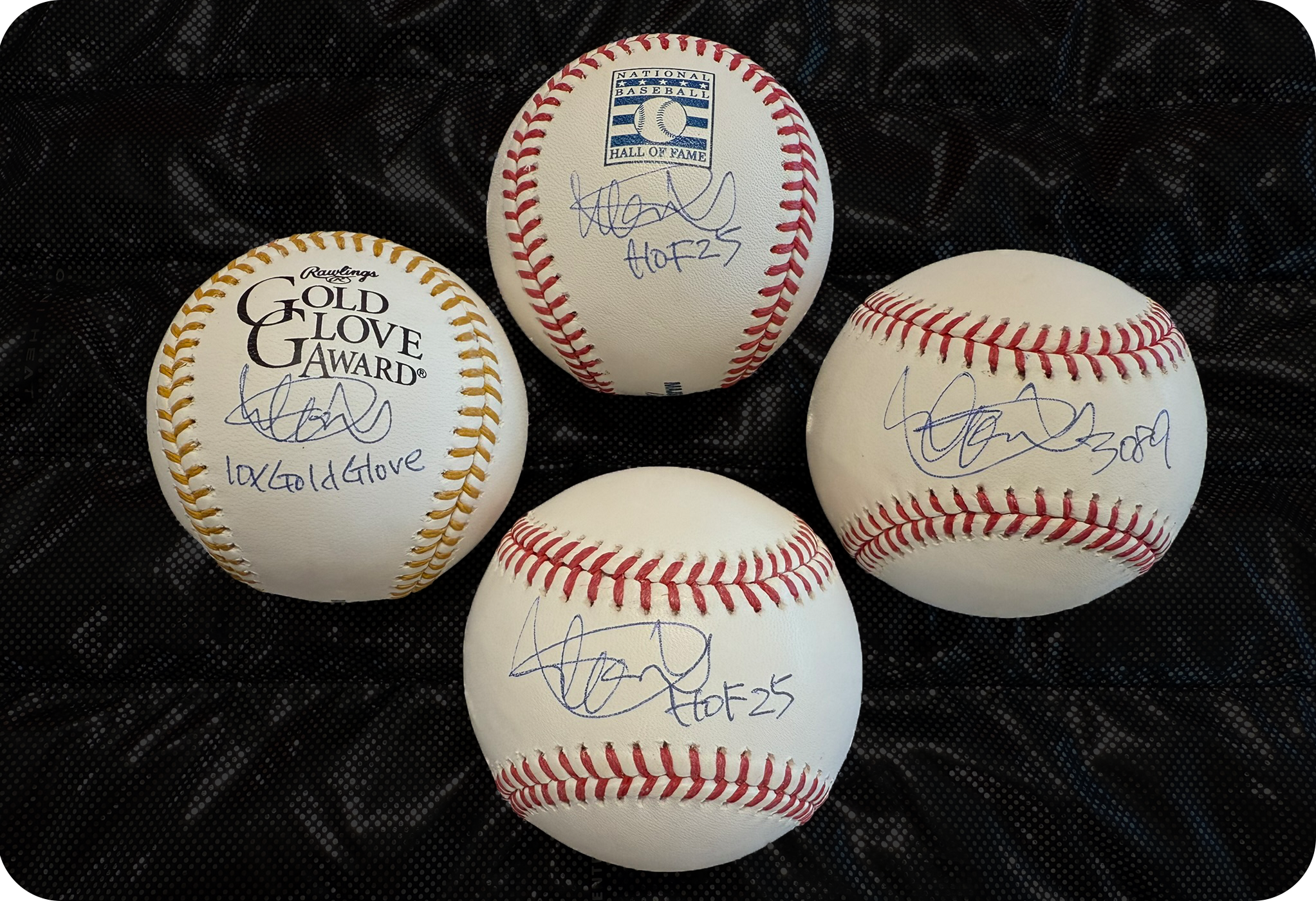
View Ichiro-Autographed Baseballs in Stock at Mill Creek Sports
Finally, I’ll leave you with a little knowledge Ichiro dropped on us years ago.
While the public loves kanji autographs, Ichiro has always been somewhat reluctant to sign in kanji. He shared with us that in Japan there are different syllabaries based on the region someone is from and autographs reflect that. In his hometown of Toyoyama, Nishikasugai, Aichi Prefecture the dialect is called katakana which means “fragmentary kana” as the characters are derived from fragments of more complex kanji.
Unfortunately his signature in katakana is fairly basic, so more interest from collectors lies in his kanji signature. Here we can see a sample of his katakana signature on this baseball I found on Ebay that carries our Mill Creek Sports Ichiro hologram (also on this baseball card posted on Reddit by user bc132). Our Operations Manager, Garron Henrikson, recalls this ball being signed and says the customer wanted the katakana signature, but Ichiro insisted on adding the roman characters as well.
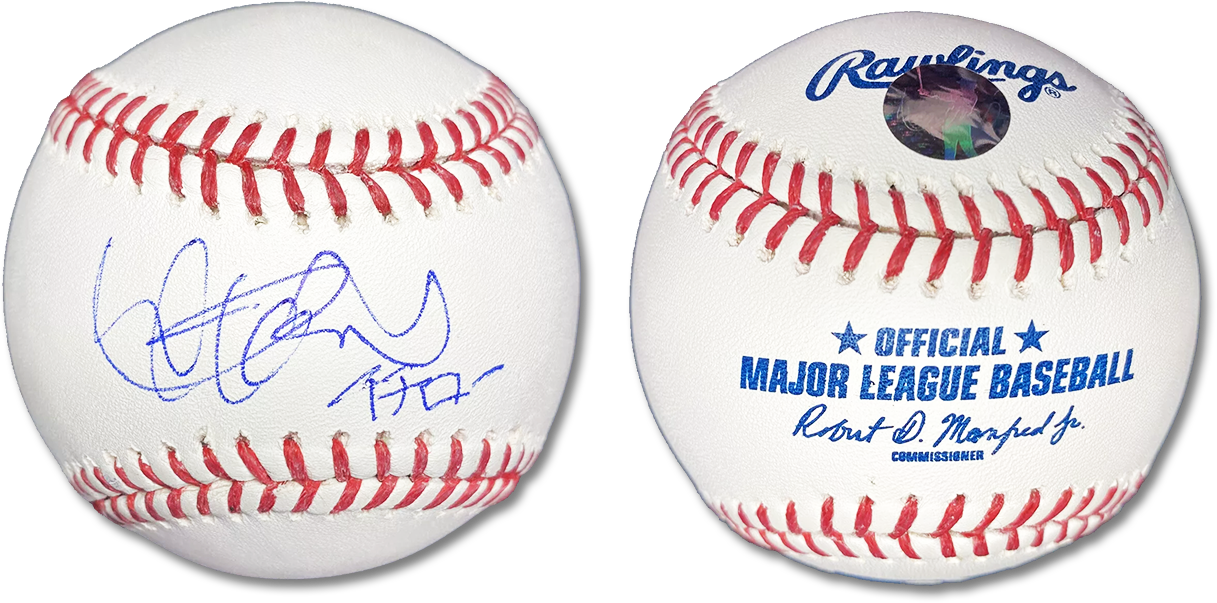
Although he rarely signs in kanji (or katakana) these days, here’s a recent example of what it looks like. Feel free to scroll back to the top of this article to compare it to his signature while playing in Japan in the ‘90s.
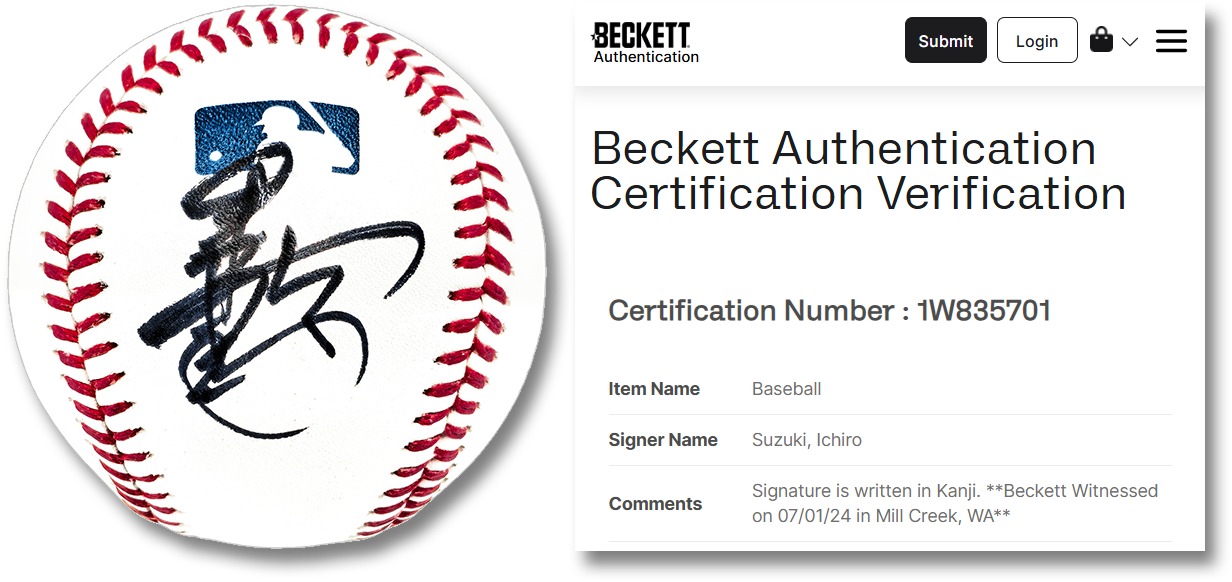
See if this ball is still available at Mill Creek Sports.
An international star with an autograph that experienced an evolution in not one, but two different languages, I can't imagine a better autograph to study than Ichiro's. His career has been a work of art, not unlike his iconic pre-bat pose or, as we've seen, his beautiful, flowing signature. I hope you enjoyed this journey with me.
From Ichiro autographs on Orix Blue Wave jerseys to his first Sports Illustrated cover, you can see samples of hundreds of Ichiro-autographed items at MillCreekSports.com.
